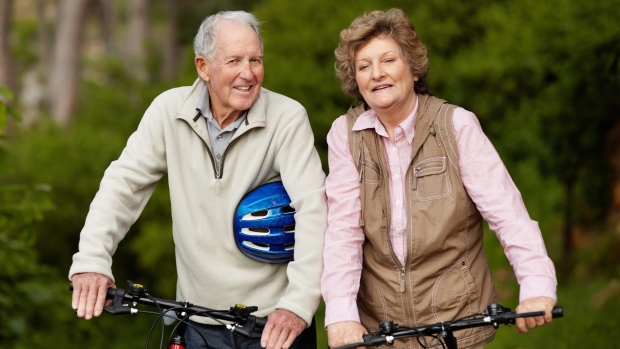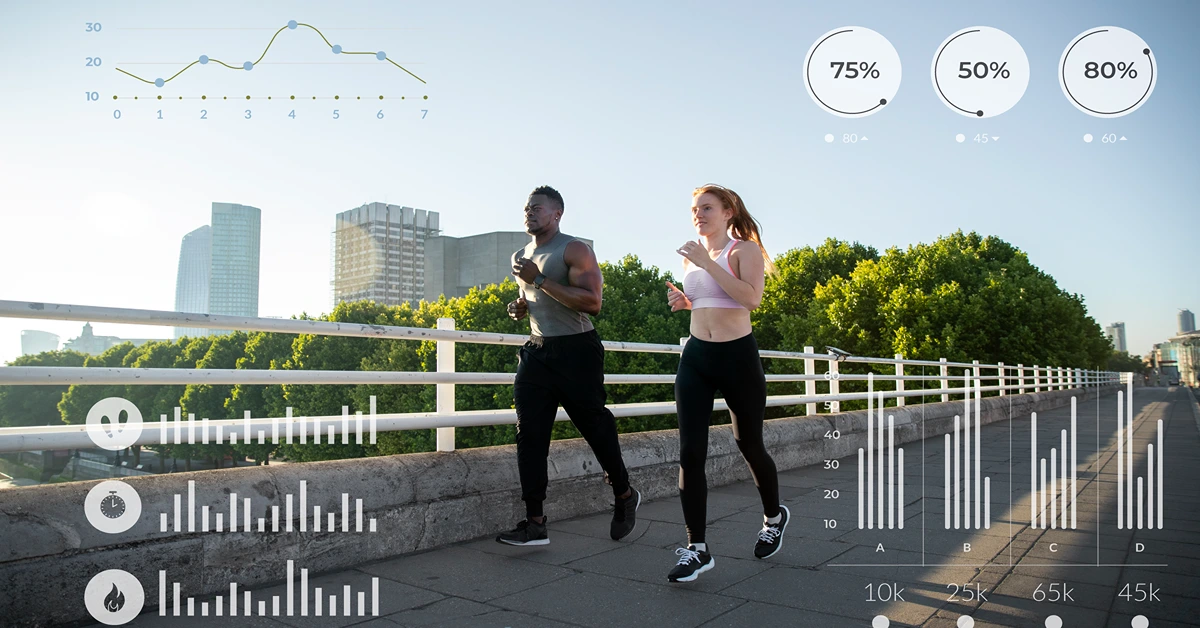Adults young and old can help put an end to a major public health enemy: lack of physical activity. The crime: adding to disease and disability. Here are some facts and strategies on feeling fit for life at any age.
Here are the facts:
-
Exercise can help older people feel better and enjoy life more, even those who think they’re too old or too out of shape.
-
Most older adults don’t get enough physical activity.
-
Lack of physical activity and poor diet, taken together, are the second largest underlying cause of death in the United States. (Smoking is the #1 cause.)
-
Regular exercise can improve some diseases and disabilities in older people who already have them. It can improve mood and relieve depression, too.
-
Staying physically active on a regular, permanent basis can help prevent or delay certain diseases (like some types of cancer, heart disease, or diabetes) and disabilities as people grow older.
How You Can Help
Plan on making physical activity a part of your everyday life. Do things you enjoy. Go for brisk walks. Ride a bike. Dance. And don’t stop doing physical tasks around the house and in the yard. Trim your hedges without a power tool. Climb stairs. Rake leaves.
The first step is to get at least 30 minutes of activity that makes you breathe harder, on most or all days of the week. That’s called “endurance activity,” because it builds your stamina. That way you can keep doing the things you need to do and the things you like to do. If you can’t be active for 30 minutes all at once, get at least 10 minutes of endurance activity at a time. If you choose to do 10-minute sessions, make sure that they add up to a total of 30 minutes at the end of the day.
Even a moderate level of sustained activity helps. One doctor describes the right level of effort this way: If you can talk without any trouble at all, your activity is probably too easy. If you can’t talk at all, it’s too hard.
Studies show that endurance activities help prevent or delay many diseases that seem to come with age. In some cases, endurance activity can also improve chronic diseases or their symptoms.
Step two is to keep using your muscles. People lose 20 to 40 percent of their muscle — and, along with it, their strength — as they age. Scientists have found that a major reason people lose muscle is because they stop doing everyday activities that use muscle power, not just because they grow older. Lack of use lets muscles waste away.
When you have enough muscle, it can mean the difference between being able to get up from a chair by yourself and having to wait for someone to help you get up. That’s true for younger adults as well as for people 90 and older. Very small changes in muscle size, changes that you can’t even see, can make a big difference in your being able to live and do things on your own.
You can combine activities – for example, walking uphill and raking leaves both build both endurance and some of your muscles at the same time. Or you can start an exercise program that makes sure you do the right types of activities. (One good reason to start an exercise program is that you will probably work muscles that you may have stopped using without even realizing it. Another is that exercise programs are likely to help you build up — not just maintain — your endurance and strength.)
Keeping your muscles in shape can help prevent another serious problem in older people: falls that cause broken hips or other disabilities. When the leg and hip muscles that support you are strong, you’re less likely to fall. And using your muscles may make your bones stronger, too.
Step three is to do things to help your balance. For example, stand on one foot, then the other, without holding onto anything for support. Stand up from sitting in a chair without using your hands or arms. Every now and then, walk heel-to-toe (the toes of the foot in back should almost touch the heel of the foot in front when you walk this way).
Step four is to stretch. Stretching won’t build your endurance or muscles, but it may help keep you limber.
Who Should Exercise?
Just about anyone, at any age, can do some type of activity to improve his or her health. Even if you have a chronic disease (cardiovascular disease or diabetes are just two examples) you can still exercise. In fact, physical activity may help your condition, but only if it’s done during times when your condition is under control. During flare-ups, exercise could be harmful. You should talk to your doctor for guidance.
Check with your doctor first if you are a man over 40 or a woman over 50 and you plan to do vigorous activity (the kind that makes you breathe and sweat hard) instead of moderate activity. Your doctor might be able to give you a go-ahead over the phone, or he or she might ask you to come in for a visit.
If you have any of the following problems, it’s important to check with your doctor before increasing your physical activity:
-
a chronic disease, or a high risk of getting one — for example, if you smoke, if you are obese; or if you have a family history of a chronic disease
-
any new, undiagnosed symptom
-
chest pain
-
shortness of breath
-
the feeling that your heart is skipping, racing, or fluttering
-
blood clots
-
infections or fever
-
undiagnosed weight loss
-
foot or ankle sores that won’t heal
-
joint swelling
-
pain or an irregular walking gait after you’ve fallen
-
a bleeding or detached retina; eye surgery or laser treatment
-
a hernia
-
hip surgery
Safety Tips
The following are some things you can do to make sure you are exercising safely:
-
Start slowly. Build up your activities and your level of effort gradually. Doing too much, too soon, can hurt you, especially if you have been inactive.
-
Avoid holding your breath while straining — when using your muscles, for example. If you have high blood pressure, pay special attention to this tip. It may seem strange at first, but the rule is to exhale during muscle exertion; inhale during relaxation. For example, if you are lifting something breathe out on the lift; breathe in on the release.
-
If you are on any medicines or have any conditions that change your natural heart rate, don’t use your pulse rate as a way of judging how hard you should exercise. “Beta blockers,” a type of blood pressure drug, are an example of this kind of medicine.
-
Use safety equipment, such as helmets, knee and elbow pads, and eye protection, to keep you from getting hurt.
Unless your doctor has asked you to limit fluids, be sure to drink plenty when you are doing endurance activities that make you sweat. Many older people tend to be low on fluid much of the time, even when not exercising. -
When you bend forward, bend from the hips, not the waist. If you keep your back straight, you’re probably bending correctly. If you let your back “hump” anyplace, you’re probably bending from the waist, which is the wrong way.
-
Make sure your muscles are warmed up before you stretch, or you could hurt them. For example, you can do a little easy biking, or walking and light arm pumping first.
-
None of the exercises should hurt or make you feel really tired. You might feel some soreness, a slight discomfort, or a bit weary, but you should not feel pain…in fact, in many ways, physical activity and exercise will probably make you feel better.





